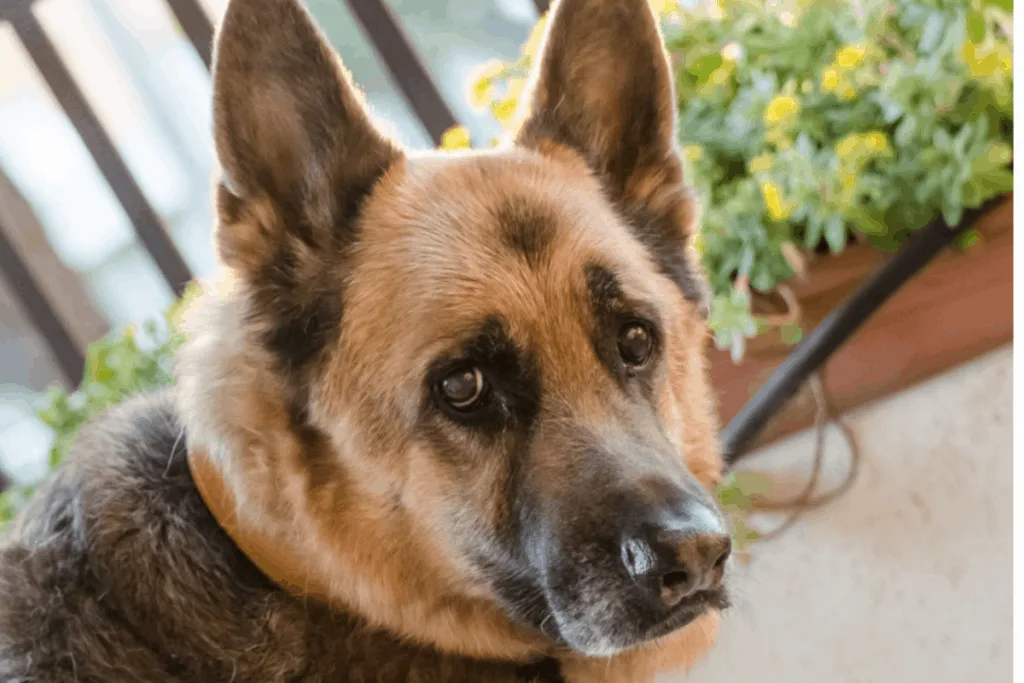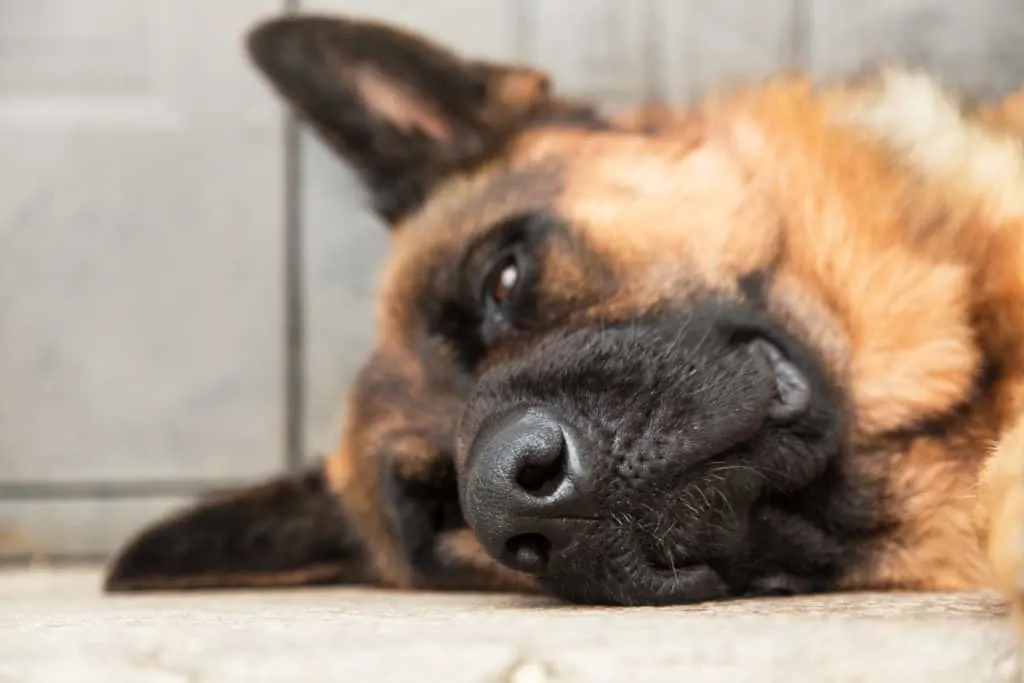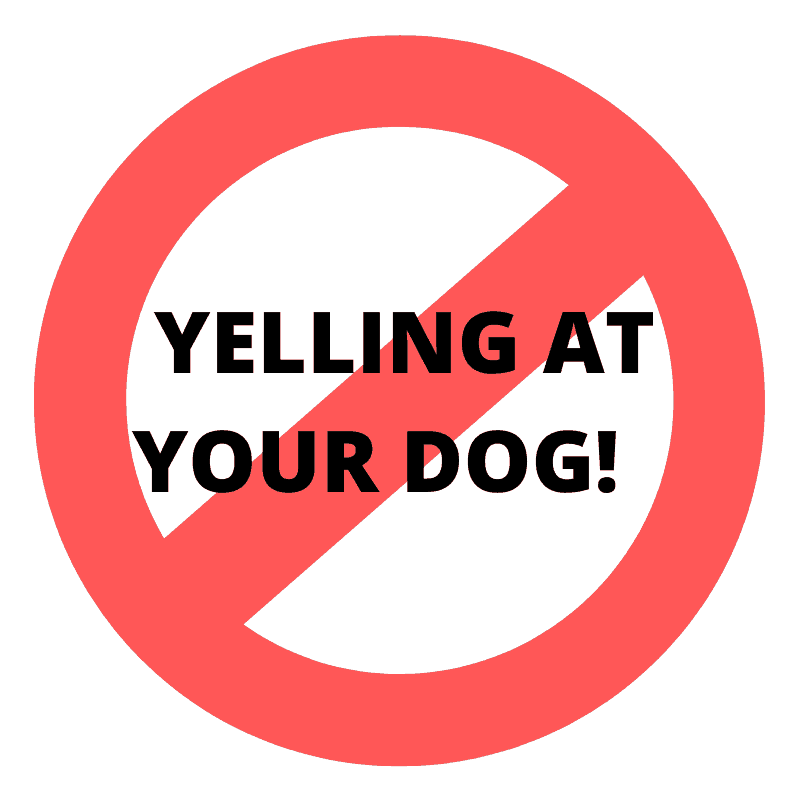
Separation anxiety is a surprisingly common occurrence in dogs, and German Shepherds are no exception.
Separation anxiety can be traumatic for both the dog and the owner. At its core, a dog’s separation anxiety is a fear of being alone, abandoned, or isolated from family. Sometimes it’s a dog’s specific fear of being without the his favorite person, and not just a general fear of being alone.
There are many things that contribute to separation anxiety including genetics, the temperament of the parents, training, past experiences, and a myriad of health issues, both mental and physical.
As frustrating as separation anxiety can be in German Shepherds, it’s not the end of the world! There are ways to help combat it and even prevent it right from the start.
Below, we’ll dive deep into the subject of German Shepherds and separation anxiety so you and your GSD buddy can finally relax and get on with the fun times.
Click Here to Jump to a Section
What is Separation Anxiety in German Shepherds?
Some cases of separation anxiety can begin as early as puppyhood, others develop over time and multiple negative exposures. That’s part of the reason it can be tricky to handle on your own.
But don’t worry; we can help!
What Causes Separation Anxiety in Dogs?
The exact cause of separation anxiety isn’t known, but there are a few plausible theories on it.
For one, it’s not hard to imagine how scary it is for natural pack animals, such as dogs or wolves, to find themselves alone. Instinctually, pack animals know that there is safety in numbers. When an anxious dog is left alone, they may fear being hurt or lost.
Another possible cause is past experience with abandonment. This is especially true for dogs who were adopted from shelters.
It’s also seen quite often in older dogs who have survived the passing of their elderly owners and must be rehomed. It’s the loss of the stability and bond they first developed as puppies that can cause problems to arise.
Here is the quick list of things that can trigger separation anxiety in German Shepherds.
- Moving to a new home
- Changing families or guardians
- New household schedule, including new work or school hours
- Additions to the household such as a new baby, new roommate, or new pet
- Subtractions from the household such as a family member moving away or a pet passing away
What Are the Signs of Separation Anxiety?
While every dog is different and may behave in their own ways, there are some common signs that dogs can show when they’re suffering from separation anxiety.
This isn’t a complete list, but you may recognize some of these behaviors or similar behaviors in your dog.
- Excessive barking while you’re away can indicate that your GSD has separation anxiety. First rule out things like barking at birds or cats outside, barking at the mail carrier, or barking at cars as they drive by.
Howling is another form of this “calling out” behavior when a dog is stressed. If your dog seems to bark or howl for no reason while you’re gone, he may be suffering from separation anxiety. - Destructive behavior is one of the hallmarks of separation anxiety. This can be especially devastating with a German Shepherd due to their size and strength.
If your GSD has been chewing shoes, tearing up the furniture, or ripping the curtains down, she may be stressed out and suffering from separation anxiety.
Some anxious GSDs even end up chewing the walls, doors, or floors! - Potty accidents such as defecating on the floor to urinating on the bed can be a sign of your dog’s anxiety.
If it’s just an occasional accident and your dog is behaving normally otherwise, there could be a medical reason, so don’t neglect the vet trip.
However, if this behavior is ongoing in an otherwise healthy dog, it’s very likely separation anxiety. - Escaping from confinement can be a sign of separation anxiety, but it can also just be a naughty dog behavior.
It’s important to figure out if your GSD is escaping for fun or doing it because he is scared. - Pacing or frequent position changes can indicate separation anxiety in a German Shepherd.
As a working dog, GSDs already have lots of energy, but if your dog seems to pace or change positions frequently in your absence, she may be feeling anxious. This is often accompanied by panting, whining, and intense attention out a window or listening in the distance.
Some dogs will exhibit these behaviors in front of their humans. If that’s the case with your dog, this isn’t a separation anxiety behavior.
If these behaviors only show up when you’re not around, then it’s a good possibility anxiety is to blame.
Does My German Shepherd Have Separation Anxiety or Something Else?
It can be tough to know if your GSD has separation anxiety or if there’s something else going on. There aren’t any medical tests or other surefire ways to know for sure, so it’s best to use the “rule out” method.
When ruling out other causes of strange or upsetting behaviors, pay close attention to the details since many of the following issues can mimic separation anxiety in German Shepherds.
Barking or Howling
As mentioned above, some German Shepherds may like spending their days barking or howling at neighborhood cats, other dogs barking nearby, pedestrians, or even the phone ringing next door.
This reactive barking or howling is not the same as separation anxiety.
In these instances, the dog is either eliciting great joy in the barking and howling, or they are showing protective and alerting behaviors. In either case, the dog isn’t upset about you being gone.
You can tell if this is an anxiety-related issue in one simple way. Does your GSD bark or howl when you’re home? Or do they only do it while you’re gone?
If they bark and howl when you’re around, it’s not an anxiety issue.
Urination in the Wrong Place
If your German Shepherd has started urinating all over the house or on the furniture, it could be separation anxiety. Or it could just be incomplete or incorrect potty training. It may also indicate a bladder infection or other urinary problems.
If your dog is peeing in the house when you’re home, it’s not likely separation anxiety.
Instead, look for lapses in your potty training or the bathroom routine. Maybe she needs a few extra trips outdoors each day or an indoor potty option.
If training isn’t the issue, definitely seek the advice of your vet team. Untreated bladder infection or infections of the urinary tract can have serious complications.
Urinating Out of Fear or Excitement
Another urination issue to keep an eye out for is fear or excitement urination. These accidents happen quickly, without warning, and often in quick spurts or sprinkles.
Some dogs do empty their whole bladder in these cases, but not always. If your dog is frightened—thunder, yelling in the household, for example—or is very excited to see you, they may have a small accident.
This is uncontrolled and often seems to surprise the dog as much as the humans.
Marking
This is usually a male behavior, but females have been known to mark their territory with urine, too.
This can happen whether you’re home or not, and it is generally done on vertical objects, such as the leg of a chair or the corner of a wall.
Boredom

By far, the most common cause of separation anxiety in German Shepherds is boredom.
Imagine being stuck at home all day, every day, all alone, waiting for your favorite person to come home.
Without the ability to leave or to create entertainment on their own, many GSDs resort to boredom behaviors. This can include barking, urinating, chewing, and pacing.
Of course, you can also see this behavior in dogs that aren’t anxious and aren’t alone. If your GSD is behaving poorly or acting out in a negative way while you’re home, she might just be really bored!
Whether alone or with you, we have a great, in-depth article right here that covers ways to alleviate the boredom. It’s a great resource for owners of anxious dogs, bored ones, or for those pet parents who just want to add some excitement to their pup’s days.
How to Calm German Shepherd’s Separation Anxiety
If you’ve gone over the symptom list and ruled out the other causes of weird GSD behaviors, you’re probably keen on finding solutions to your German Shepherd’s separation anxiety.
Likely, your dog is eager for relief too! Here are some ways you can help your GSD relax and find peace while you’re away.
Positive Reinforcement
As with human children, positive reinforcement of preferred behaviors is a stellar way to help a German Shepherd prevent or cope with separation anxiety.
Your goal is to slowly change the fearful, anxious behaviors and reactions to calm and relaxed ones. You do so by rewarding calm behaviors and ignoring the negative ones.
This works best for mild cases of separation anxiety, usually well before the bad behaviors have really taken hold.
This is also known as counterconditioning, and it’s much easier than you may think. It also works with other behavior issues, not just separation anxiety.
By gradually exposing your GSD to the trigger of their anxiety (being alone), and rewarding the dog with pleasant things (such as treats), you will begin to change the emotional reaction to the trigger.
It can take some time to fully change the anxiety response to a calm one, but stick with it.
Use toys, treats, or your dog’s next meal as the reward. Anything your GSD really loves can work in this situation.
When you’re ready to leave, give your dog the positive object—a KONG toy filled with treat paste is a great choice—and then step out of the house. Give the dog 20 – 30 minutes to finish the treat, then come back.
Gradually, you can increase the time you’re gone, but always give a positive trigger before you go.
Desensitization
That word is a mouthful, but it’s a great way to help an anxious German Shepherd get over separation anxiety.
In this method, you gradually expose the dog to the fear trigger (being alone), but not for a long enough period that they feel the full force of the anxiety.
For this to work, you’ll need to use short and frequent exposures that do not elicit a negative response. Sometimes, that’s just a minute or two.
The best way to accomplish this is to first train your dog to perform the stay command while you step out of the room.
Call him to you, reward, then repeat. Once he’s used to you leaving the room after a stay command, he may feel less anxious about not seeing you for a few minutes at a time.
You can start using the bathroom door or a bedroom door to separate you, then opening the door and calling him to you.
Pre-departure Anxiety
Be sure your dog is relaxed when you do start to leave the house. It’s much harder for a GSD to get worked up and anxious if they’re relaxed to start with.
Many German Shepherds begin their anxiety behaviors even before you step outside the door. By watching for these signs and reacting appropriately, you can nip this in the bud right away.
Figure out what the anxiety cue is for your dog. For many, it’s when their humans pick up the car or house keys.
For some, it’s seeing their humans put on their jackets or shoes. For others, it may be seeing a lunch box or bag sitting on the counter. Whatever it is for your dog, begin desensitizing her to that object or ritual.
You do this by disrupting the negative association. For instance, if your dog flips out when you put on your shoes, just put your shoes on and then don’t leave.
Sit back on the couch with your shoes on, petting your dog, and acting calm. In this way, the dog will come to realize that the shoes don’t always mean you’ll be leaving.
Stay Calm
This advice is for you. If you react to your dog’s stress and anxiety by pouring on the love and making a big deal about your departure, he will become even more anxious.
Stay calm when you’re preparing to leave. You can say goodbye to your dog, but don’t make a big deal about it.
If you’ve desensitized her to your keys or shoes (or other stress triggers), and she is used to being alone in a room with a stay command, she’s already well on her way to overcoming her anxiety. Give her a positive trigger (the toy or treat), and then simply leave the house.
Set a Routine
This may be one of the most important ways to help an anxious German Shepherd feel calmer.
Changes in routine and schedules can be a huge upsetting influence on a dog. Try to keep to the same routine and schedule, even on your days off. This will help your German Shepherd feel more in control and less afraid.
If he knows you wake at 7 in the morning, take him for a walk, feed him breakfast, and then leave for the day, be sure to follow that schedule every day as closely as possible.
He’ll know what to expect and when. That might mean waking early on weekends and actually leaving your house for a little while, but it’s for the best when dealing with anxious dogs.
Routines bring peace and safety. You can eventually make some changes to the routine, slowly, once your dog is feeling less anxious.
Provide Activities
If you can provide activities to keep your GSD busy while you’re away, she will be less likely to become anxious.
This advice is an offshoot of the counterconditioning and positive reinforcement section above. In this scenario, your dog will look forward to whatever positive trigger you’ll be providing for the day.
It could be a new toy, a puzzle, or a game to play in your absence. We’ve got a good list of suggestions here.
Medication may help
You may have tried everything listed above, plus a million other creative ideas, and yet your dog is still anxious when you leave. If that’s the case, you may need to ask the vet for help.
There is no shame in helping a dog feel less anxious via medical intervention. Just as some humans need a little help from their doctors, so too do some German Shepherds.
Ideally, medication would not be your first choice. And in a perfect world, you would not need to provide the medication forever. But it’s best not to rule it out either. Medication is the right choice for some dogs.
What not to do to an anxious German Shepherd
Now that you know what to do for a German Shepherd with separation anxiety, let’s look at what not to do.

The biggest “no” on this list is punishment. Do not yell at, scold, or discipline your dog. This will only exacerbate his fear and may make things even worse down the road.
Do not ignore separation anxiety either. This is not a behavior that will get better all on its own. You need to figure out what works for your dog and then stick with it.
Also, don’t ignore training. Not just the training you already do, but new training, too. You may find some great tips from a local dog meet-up or by contacting a dog trainer that specializes in anxiety.
Final Thoughts
Understanding what separation anxiety is, what to look for, and how to treat it at home are all important ways to show love to your German Shepherd.
When you can understand what causes your sweet pup to be so afraid or so anxious, you can take steps to remove the issue or to make the trigger less scary to begin with.
By employing one or more of the strategies listed above you can help your GSD live a happier, healthier, and more confident life.
What are some ways you’ve helped your anxious German Shepherd in the past?
